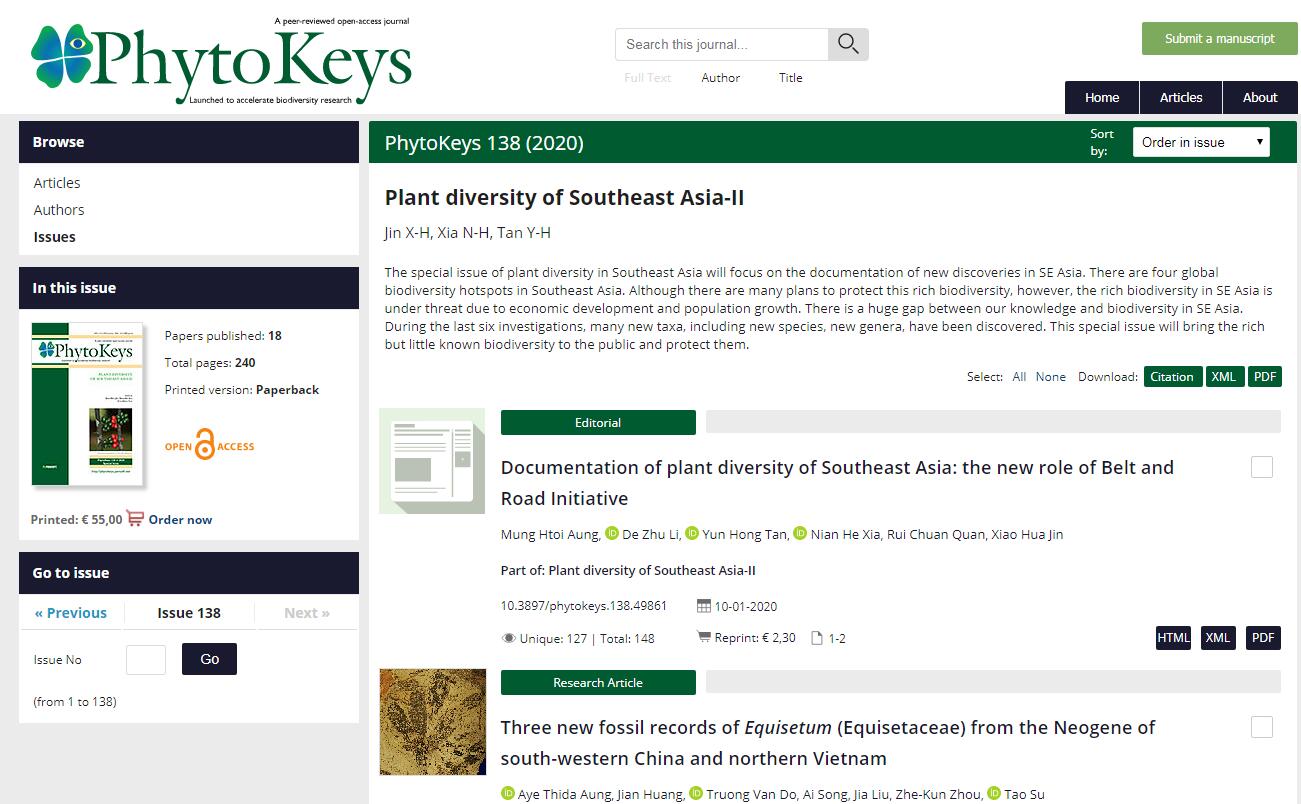PhytoKeys has recently released a special issue concerning plant diversity in Southeast Asia. The special issue focuses on the documentation of new discoveries in SE Asia. There are four global biodiversity hotspots in Southeast Asia. Although there are many plans to protect this rich biodiversity, however, the rich biodiversity in SE Asia is under threat due to economic development and population growth. There is a huge gap between our knowledge and biodiversity in SE Asia. During the last six investigations, many new taxa, including new species, new genera, have been discovered. This special issue will bring the rich but little known biodiversity to the public and protect them.
In the special issue, 17 articles involving documentation of taxonomic discovery has been published. They include three new fossil records of Equisetum, a new genus and species of temperate bamboo, a new species of paleotropical bamboo genus Schizostachyum, a new species and two new records of Goniothalamus, a new species of Bulbophyllum, two new species of Alseodaphnopsis, a new species of Ainsliaea, new species of Colocasia (Araceae), Ophiorrhiza (Rubiaceae), Blumea (Asteraceae) and Zingiber (Zingiberaceae), taxonomic studies on Amomum (Zingiberaceae), an annotated checklist of Orchidaceae and notes on Gastrochillus(Orchidaceae) from Myanmar and a new species and two new combinations of Monolophus (Zingiberaceae) from Indo-Burma.
In order to conserve high biodiversity and promote sustainable development in SE Asia, the Southeast Asian Biodiversity Research Institute (SEABRI) was established by the Chinese Academy of Sciences (CAS), in Nay Pyi Taw in 2015 in cooperation with the Forest Research Institute under the auspices of the Ministry of Environmental Conservation and Forestry of Myanmar. With financial and personnel support from CAS, SEABRI actively participates in conservation actions by undertaking local awareness of biodiversity and public education training, awarding scholarships for young scientists and supporting regional capacity building.
This is the second special issue which represents new contributions by SEABRI to promote our understanding of the biodiversity and conservation in the region. The 17 articles have been contributed mainly by young botanists from Southeast Asian countries with support from SEABRI.

Special issue of PhytoKeys

